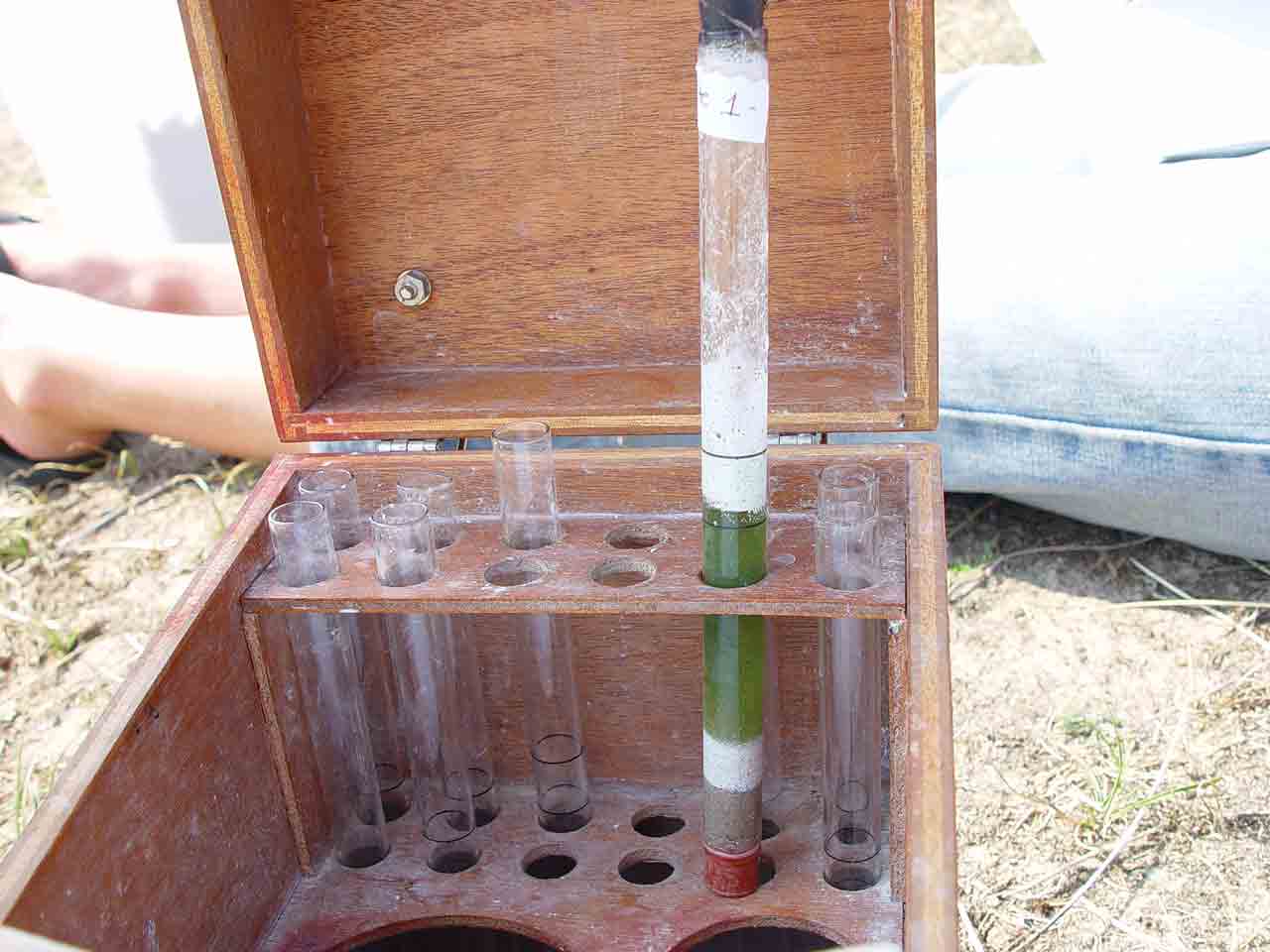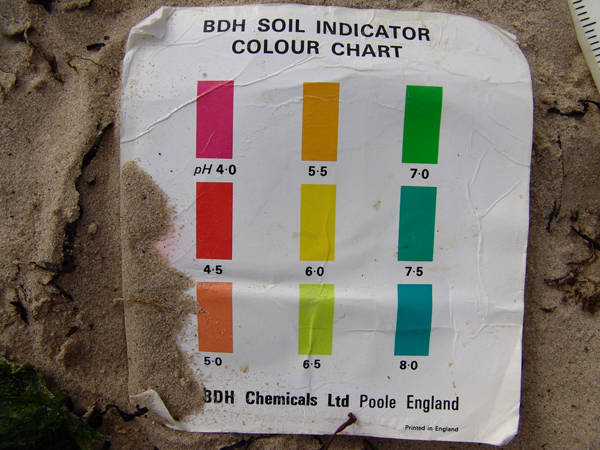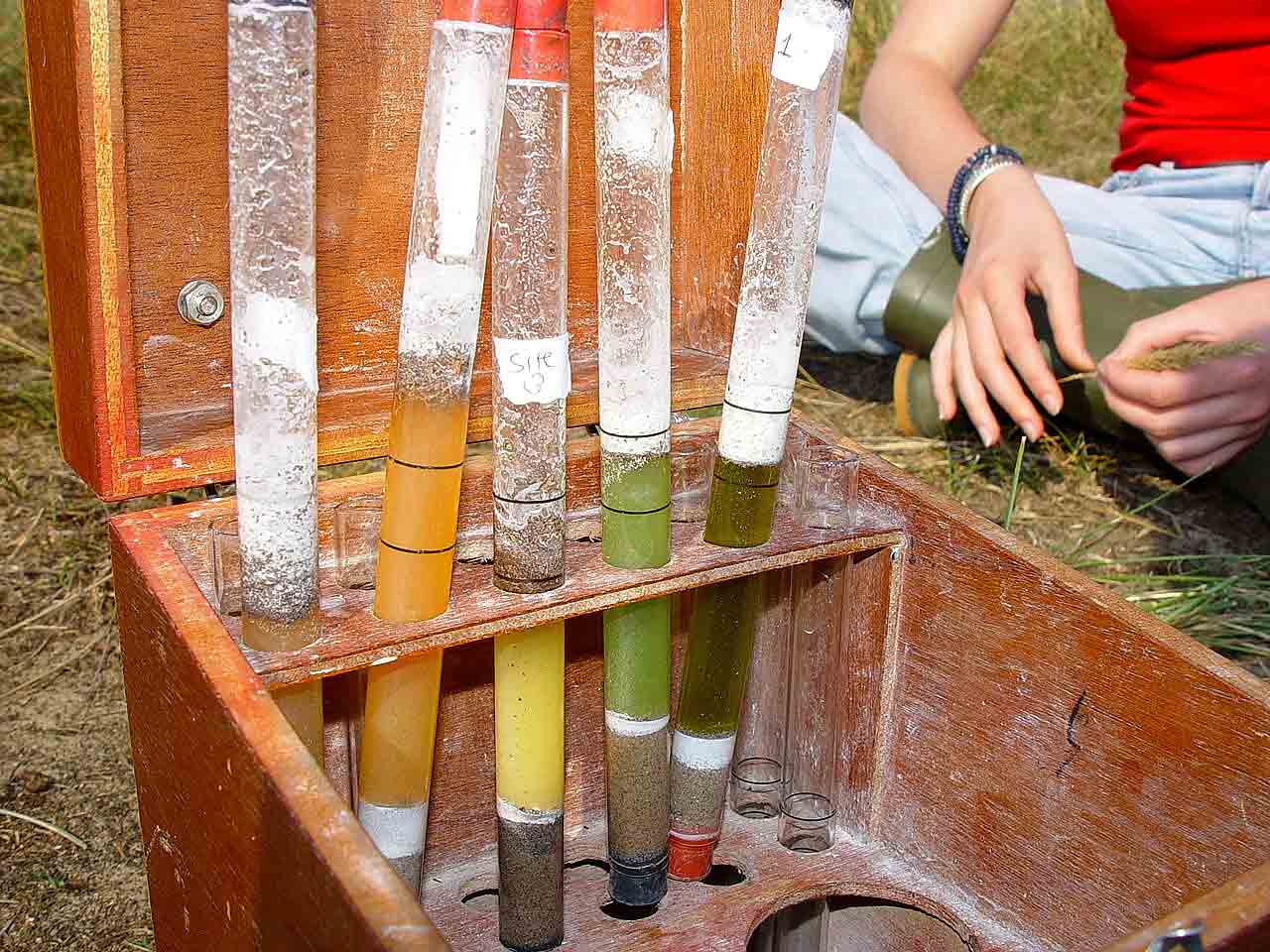For plants growing in soil, among the most important abiotic factors are those associated with the soil
pH
Soil acidity or alkalinity is measured on the pH scale which is a method of expressing hydrogen ion concentration. On this scale, 7 is neutral, values below 7 are acid and values above 7 are alkaline. The amount by which the value differs from 7 gives a measure of the strength; thus, pH 8 is mildly alkaline, pH 6 mildly acid, and pH 3 strongly acid. There are various methods of measuring soil pH, most of them based on colour changes in indicator solutions.
- Place about 2 g of soil on a crucible lid, soak it with BDH Universal Indicator, wait 1-2 min and then tilt the lid so that indicator drains out of the soil. Compare the colour with the chart supplied with the indicator.
- Proceed as above but soak the soil with distilled water. Drain, then test the water with Universal Indicator Test Papers - then get a more accurate value using a paper with a more limited range.
- BDH Soil Test Outfit. This uses tubes in which a small quantity of soil is mixed with barium sulphate, water and indicator and shaken. The barium sulphate ensures flocculation and precipitation of colloidal clay but may itself give rise to inaccuracy due to acidity if not of guaranteed quality. The resulting coloured solution is compared with a colour chart.
 This is a BDH soil test kit in use. There is also a picture of a chart to the right. What is the pH of this sample?
This is a BDH soil test kit in use. There is also a picture of a chart to the right. What is the pH of this sample?
Here are some more to try. They move inland from the front of a dune system as you move from right to left of the tubes, what does this show?
- pH Meters provide direct and accurate pH readings, but are rather expensive and delicate in the field.
(based on An Introduction to Field Biology by Donald P. Bennett and David A. Humphries)
Water content
Not all the water in soil is available to plants, we might be, therefore, interested in total water or available water
TOTAL WATER
This can easily be determined by placing a weighed sample of the soil in an oven at just over 100 C. All the water is driven off, but it is too cool to drive off organic compounds. After a few hours the sample is re-weighed, placed back in the oven and then weighed again after another few hours. This procedure is repeated until two consecutive masses are the same, this is called DRYING TO CONSTANT MASS. The mass of water in the soil can now be worked out by difference and is usually then expressed as a percentage of the wet mass.
AVAILABLE WATER
That water which is held tightly on soil particles will be included in the above estimate, but not actually available to plants. The actual available water can be determined by air drying a smplae in the same way as above at room temperature
Organic content
Any organic matter in soil will be oxidised in the presence of strong heating in the air. Weighed oven dry soil samples can be heated in a heated crucible, with lid on, for an hour or so. The crucible with soil is placed in a desiccator to cool and then re weighed. As with water content, this is repeated until constant mass is achieved. The difference between the initial dry weight and the weight after burning is the organic matter content and cab be expressed as a percentage.

